Have your say on road names in the Airport Precinct
 Published on
Published on

The City of Ballarat is calling for the community to provide feedback on proposed names for 11 unnamed roads within the Ballarat Airport Precinct.
The 55 buildings on these roads currently have unique building reference numbers. This addressing format can be confusing given the number of buildings and number of unnamed roads. The proposed road names will provide accurate street addresses for the buildings within the precinct.
The proposed names were compiled in conjunction with the Ballarat Airport Manager, the Ballarat Airport Stakeholder Reference Group and the Wadawurrung Traditional Owners Aboriginal Corporation. They also respond to some feedback received during earlier consultation on the road names in December 2022.
Many of the proposed road names are steeped in the history of the region and the airport precinct.
The City of Ballarat conducted community consultation on the proposed road names in December last year with mixed feedback. Based on this feedback, Council officers have conducted further research and proposed alternate names for some of the roads as indicated below.
- Kitty Hawk Close – a well-known single seat aircraft. These were the only effective RAAF fighters throughout the fighting at Port Moresby and Milne Bay in 1942 when the Japanese advance towards Australia was stopped.
- Winmaling Circuit - (pronounced Win-mar-ling) – the Wadawurrung word for ‘wind’. This name is supported by Wadawurrung Traditional Owners Aboriginal Corporation.
- Gladys Way - Gladys Joyce Mathews, born in Ballarat, enlisted into the Royal Australian Airforce in 1942 in Ballarat. Gladys was a part of the ‘1 Wireless and Gunners School Ballarat’ (Mathews has been ruled out as it would create a duplicate road name).
- Avro Anson Approach - the Avro Anson is a significant aircraft in the history of the airport. During World War II over 6000 people trained at 1 Wireless Air Gunners School - the majority of them trained in one of the 72 Avro Anson’s.
- Terminal Place – an appropriate name for an access road to terminal buildings at an airport.
- Karndorr Circuit - (pronounced Karn-door) – the Wadawurrung word for ‘track’. This name is supported by Wadawurrung Traditional Owners Aboriginal Corporation.
- Fairbairn Street - Wing Commander Charles Osborne Fairbairn served as a fighter pilot in the Royal Flying Corps in World War I and afterwards in the Royal Air Force, where he was awarded the Air Force Cross. He served as the Commanding Officer of No 1 Wireless Air Gunners School and transferred to the Royal Australian Air Force Reserve of Officers in 1944. He was responsible for the training schools’ daily operations and the welfare of the trainees as well as fostering positive relations between the base and the Ballarat Community.
- Cheetah Road – named after the Cheetah Aircraft which was designed by Armstrong Siddeley in 1930. It evolved from the seven-cylinder Lynx radial of 1920. The aircraft was primarily used on pre-war British military aircraft, including the Arvo Anson monoplane bomber which in 1935 was Britain’s first twin engine aircraft with retractable undercarriage.
- Boomerang Road - the Commonwealth Aircraft Corporation (CAC) Boomerang was a fighter aircraft designed and manufactured in Australia between 1942 and 1945. It was the first combat aircraft designed and constructed in Australia.
- Timmins Lane - Thora Beatrice Timmins, born in Ballarat, enlisted into the Royal Australian Airforce in 1942. Thora was a part of the No 1 Wireless Air Gunners School in Ballarat.
- Petch Circuit – Flying Officer Francis Noel Miller Petch was born and educated in Ballarat, wanting to join the air force from a young age. He enlisted in the Royal Australia Air Force in 1942 and was posted to the No 1 Wireless Air Gunners School. Frank was discharged from the Royal Australia Air Force in 1945 with the rank of Flying Officer.
The City of Ballarat is encouraging community members to make submissions to oppose or support the proposed road names. If the proposed name is not supported, community members must indicate why and/or demonstrate why the proposal does not conform to Victoria’s naming rules.
There are two ways for community members to submit submissions to the City of Ballarat.
- Online survey – there is a survey on the MySay page of the City of Ballarat website where community members can make submissions.
- Written submissions – written submissions quote number ‘NP235 – BALLARAT AIRPORT PRECINCT’ should be addressed to the Manager Revenue and Procurement Services and can be mailed to ‘Reply Paid 655 BALLARAT VIC 3353’, or emailed to info@ballarat.vic.gov.au.
City of Ballarat Councillor Samantha McIntosh encouraged the community to have their say on the proposed names.
“We want the new names of these roads to be a reflection not only of the region's history, but also of the broader community,” she said.
“I’d encourage all residents to provide their feedback on the road names the City of Ballarat is proposing.”
Submissions close at 5pm on 7 July. After the consultation phase, a report will be considered by City of Ballarat Councillors.
For more information about the naming proposal, including maps and submission process information, visit the City of Ballarat MySay page.
More news
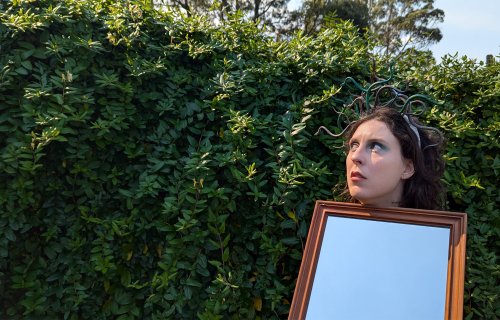
 24 April 2025
24 April 2025
New residency program to support Ballarat creatives
The City of Ballarat’s Creative City team is partnering with arts organisation Punctum to deliver Seedpod, a renowned…
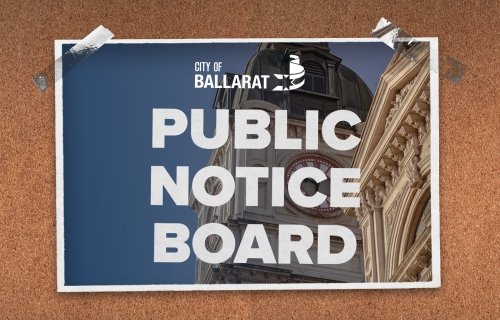
 25 April 2025
25 April 2025
Public Notices - Friday 25 April 2025
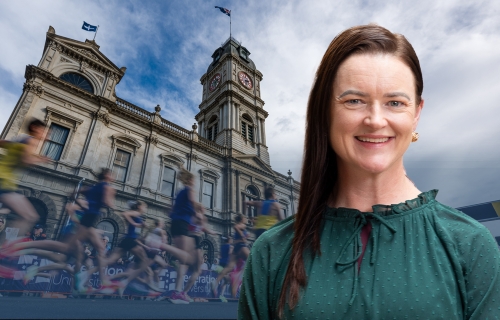
 25 April 2025
25 April 2025
Mayor’s Message - Friday 25 April 2025
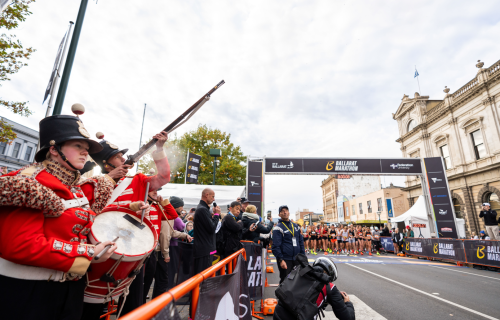
 23 April 2025
23 April 2025
Everything you need to know about the 2025 Ballarat Marathon
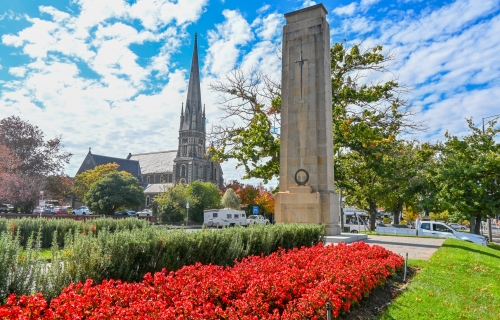
 22 April 2025
22 April 2025
Where you can attend an ANZAC Day service in Ballarat in 2025

 17 April 2025
17 April 2025